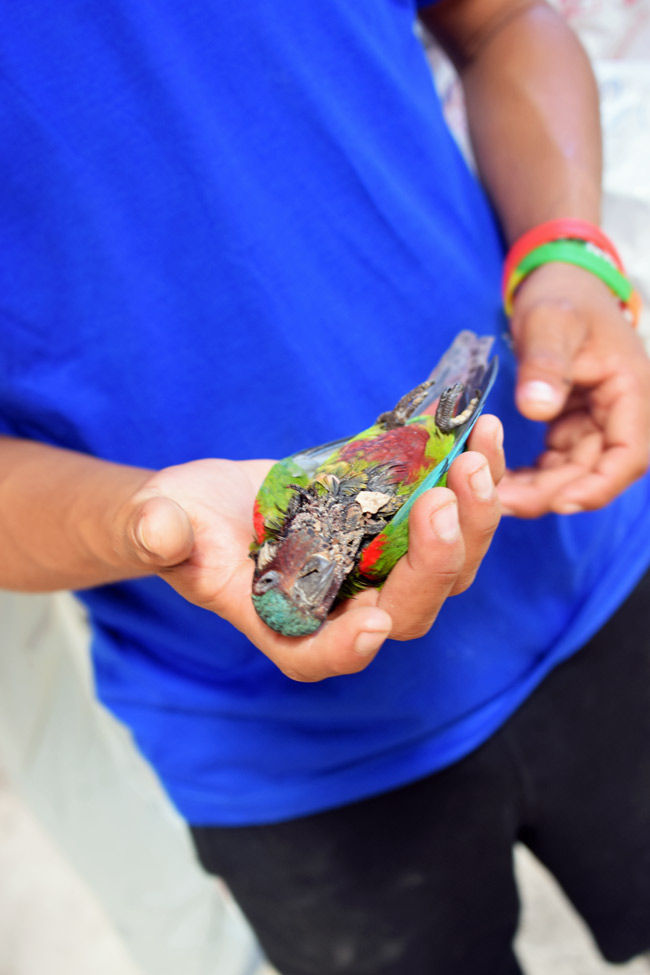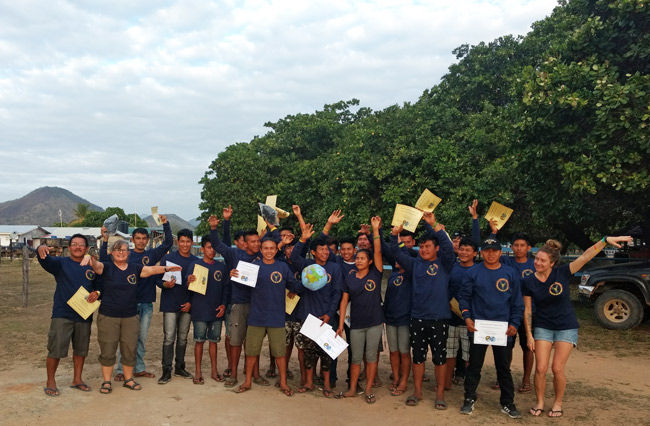Conservation: Take a Life, Give a Life
- Rev. Dr. LoraKim Joyner
- Feb 4, 2019
- 3 min read
What an encounter between a parrot and a snake can teach us

Painted parakeet caught by what seems to be a vine snake, also known as a parrot snake
I was packing up to leave our camp on the river between Brazil and Guyana when the leader of the parrot conservation project in the village of Karasabai came running up from the river side shouting, "A snake has a parakeet!" Our camping was a means to teach parrot conservation in the field to a group of young and future parrot conservationists.
I and the 20 students in our parrot conservation training course rushed down the slope to hear the intermittent plaintive cries of a painted parakeet in the jaws of a small green snake. Later we identified it as a parrot snake, or vine snake, which is mildly venomous to small prey. I assumed the bird would die no matter what we did, so I concentrated on getting pictures of the ordeal to help me identify the snake and document the predation. Some of the students had another idea, especially when the parakeet hadn't died after 30 minutes. Before we could have a conversation, they started throwing sticks at the snake until the serpent finally let go of the parakeet. The parakeet fluttered to a nearby tree, clinging desperately to the branches, and to life. It fell to the ground, and we put the bird in a box thinking that perhaps we could treat the bird back at the village where I could access medical supplies. Instead the bird's condition deteriorated until it was barely breathing and had a faint heartbeat, so we elected to euthanize the bird so it would not suffer.

Back at the village we gathered the students around to talk about the ordeal. Little did I know how traumatic it was to many students to not be able to save the bird. I felt awful too that the bird had suffered so much. I assumed it would have died no matter what we did and that the snake probably needed a meal, so I had not been thinking of saving the little parrot, but several of the students had. One of them rose to his feet and said:
"Death is a part of the cycle of life. But if you take a life, you must give a life back. We took our endangered sun parakeets for years, we took their lives. They died in the wildlife trade and they have almost gone extinct here. Now we must give those lives back. We must protect our parrots with everything we can commit to. We must give our lives for our parrots."
I was moved by their commitment and his words, as it is a big part of my motivation in parrot conservation; to give back the life that has been given to me and to amend for all the lives I have taken as a human being, as a pet parrot owner, as an aviculturist, as an avian veterinarian, and ever still as an avian conservationist.
Perhaps that is what conservation is - to give back the lives we have taken. And success in the final accounting is not whether the species is saved, but if we are saved by how many more lives we have benefited, and how fewer lives we have harmed.
Though it was a hard lesson learned, as was the entire long week of intensive parrot conservation training, and indeed the entirety of parrot conservation, this group of future rangers showed that they are made of the stuff of great conservationists.

Graduating class of parrot conservationists with leaders Andrew, LoraKim, and Danika
